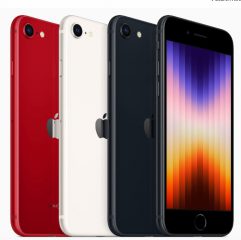

President Donald Trump has now denied that the US government officially removed mobile handsets and key electronic components from its list of tariffed goods on Friday.
In a bulletin issued late Friday, U.S. Customs and Border Protection said that smartphones and several classes of tech hardware are now exempt from tariffs imposed under Executive Order 14257. The change follows a Presidential Memorandum issued on April 11 clarifying exceptions under the ongoing trade enforcement order.
However on Sunday night, Trump announced:
“NOBODY is getting “off the hook” for the unfair Trade Balances, and Non Monetary Tariff Barriers, that other Countries have used against us, especially not China which, by far, treats us the worst! There was no Tariff “exception” announced on Friday. These products are subject to the existing 20% Fentanyl Tariffs, and they are just moving to a different Tariff “bucket.”
Yet the Government’s on Harmonised Tariff web site saud that :effective for imports from 12:01 a.m. April 5, the ruling covers all products classified under Harmonised Tariff Schedule Code 8517, which includes:
“Telephone sets, including smartphones and other telephones for cellular networks or for other wireless networks; other apparatus for the transmission or reception of voice, images or other data… including parts thereof.”
The exemption will be welcomed by OEMs, distributors, and retailers alike, many of whom have been grappling with increased import costs and supply chain friction over the past two years. The affected tariff category had previously added significant cost pressure to new device launches and component sourcing, particularly for US-bound shipments from Asia.
The development marks a real turning point for mobile. With tariff uncertainty removed, vendors can plan production and pricing strategies with renewed confidence.

The update also removes tariffs on other electronic components used in mobile and network infrastructure — a potential accelerator for 5G deployment and next-gen device development in the U.S. market.
Industry observers believe the move signals a broader cooling in U.S. trade policy toward consumer technology, as the administration seeks to balance protectionist measures with domestic economic growth and technological leadership.
With the tariff lift now in place, the mobile channel could see increased margin stability, lower device costs, and greater product availability heading into the crucial summer and Q4 periods.
“Major US technology companies remain heavily dependent on China’s highly efficient and deeply integrated manufacturing ecosystem”, said IDC VP Devices (EMEA) Francisco Jeronimo.
“For high-volume products like smartphones, tablets or PCs, any attempt at rapid diversification would be both costly and logistically unfeasible. Imposing tariffs on these goods would translate directly into higher retail pricee and eroding the global competitiveness of some of America’s most valuable firms.

“Giants like Apple, HP, and Dell, depend significantly on manufacturing facilities within China and their associated ecosystems of suppliers and contract manufacturers to produce flagship products at the scale and cost required by the global market.
“Apple’s situation is particularly notable., Despite well-publicised efforts to diversify its manufacturing footprint into countries like India and Vietnam, most of its core hardware products, especially iPhones, is assembled in China. This deep integration leaves these companies highly exposed to disruptions stemming from trade policy shifts. Even for companies actively pursuing diversification,China often remains the primary source for these complex, high-volume products due to the sheer scale and efficiency challenges elsewhere”.







